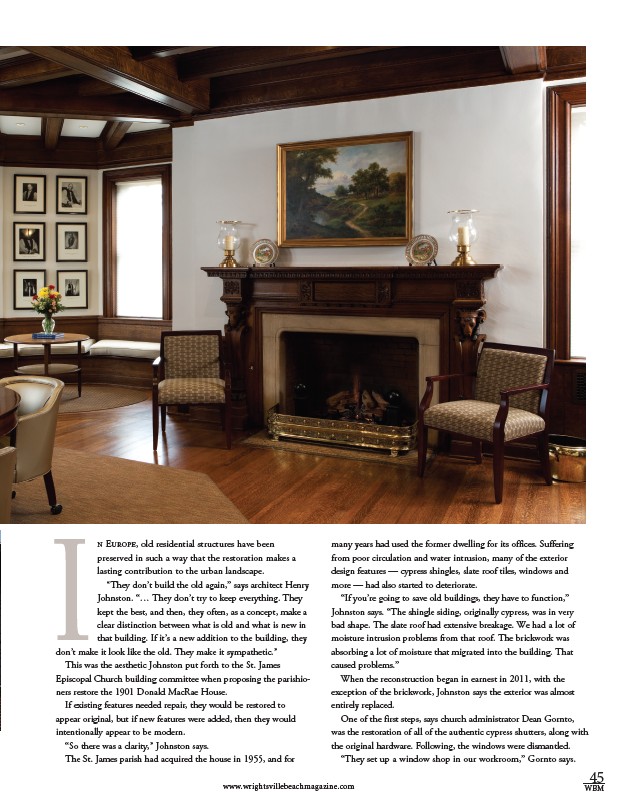
many years had used the former dwelling for its offices. Suffering
from poor circulation and water intrusion, many of the exterior
design features — cypress shingles, slate roof tiles, windows and
more — had also started to deteriorate.
“If you’re going to save old buildings, they have to function,”
Johnston says. “The shingle siding, originally cypress, was in very
bad shape. The slate roof had extensive breakage. We had a lot of
moisture intrusion problems from that roof. The brickwork was
absorbing a lot of moisture that migrated into the building. That
caused problems.”
When the reconstruction began in earnest in 2011, with the
exception of the brickwork, Johnston says the exterior was almost
entirely replaced.
One of the first steps, says church administrator Dean Gornto,
was the restoration of all of the authentic cypress shutters, along with
the original hardware. Following, the windows were dismantled.
“They set up a window shop in our workroom,” Gornto says.
45
n Europe, old residential structures have been
preserved in such a way that the restoration makes a
lasting contribution to the urban landscape.
“They don’t build the old again,” says architect Henry
Johnston. “… They don’t try to keep everything. They
kept the best, and then, they often, as a concept, make a
clear distinction between what is old and what is new in
that building. If it’s a new addition to the building, they
don’t make it look like the old. They make it sympathetic.”
This was the aesthetic Johnston put forth to the St. James
Episcopal Church building committee when proposing the parishio-ners
restore the 1901 Donald MacRae House.
If existing features needed repair, they would be restored to
appear original, but if new features were added, then they would
intentionally appear to be modern.
“So there was a clarity,” Johnston says.
The St. James parish had acquired the house in 1955, and for
www.wrightsvillebeachmagazine.com WBM
I